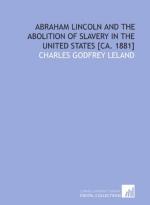|
This section contains 17,528 words (approx. 59 pages at 300 words per page) |

|
SOURCE: Dykes, Eva Beatrice. “The Romantic Climax.” In The Negro in English Romantic Thought, or, A Study of Sympathy for the Oppressed, pp. 63-103. Washington, D.C.: Associated Publishers, 1942.
In the following essay, Dykes examines the poetry and prose of famous English authors writing on abolitionist themes, including Samuel Taylor Coleridge, Percy Shelley, Thomas DeQuincey, and Charles Dickens. These authors focused their attacks on British slavery until it was abolished in 1833, after which they turned their attentions to the United States.
Section I—setting (nineteenth Century)
Echoes of the French and American Revolutions, increasing interest in industrialism, the desire to continue humanitarian efforts in behalf of the laboring classes and the unfortunate transgressors of the law, and the eventual abolition of the slave trade in 1807 preserved in the hearts of many people the flames of freedom and a deep consciousness of the universal brotherhood of man. Certain magazines...
|
This section contains 17,528 words (approx. 59 pages at 300 words per page) |

|


